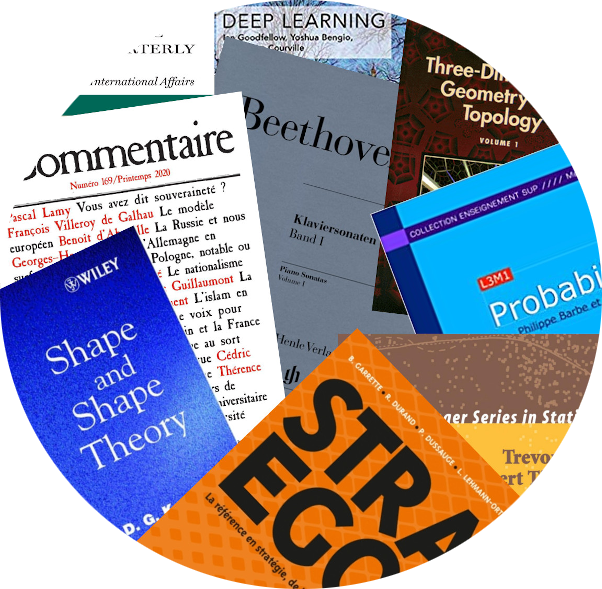 Philippe Barbe
Philippe Barbe

|
Content valorizationby Philippe Barbe
10 Mar 2021
|
Part 18 of 20 in a series examining the interplay of Data Science, AI, the media and advertising.
The media industry brings together
- brands wanting to advertise,
- consumers who consume goods and services from those brands,
- content creators who sell their creations to media operators, and
- media operators who place that content in front of consumers to get revenues from advertisers.
Some of these interactions are measured, such as what goods and services people buy, or what media they consume. These measurements serve as metrics that drive value in the media/content/advertiser ecosystem.
The Exchange proposed in part 12 of this series aims at making the flow of information and transactions between and among the participants much more efficient, creating a user experience for these parties in the traditional media world that is comparable to that of the digital world.
For content creators the flow is mostly to and from media operators as their content passes through a publisher/broadcaster on its way to the consumer of that content. In part 9 we saw how the complexity of transactions throughout the ecosystem and the abundance of content has devalued content.
This article discusses the function of the Exchange that would link media operations to content creation. It is by far the most ambitious and technically complex piece of the proposed Exchange to build.
Part of the challenge is that it sets a vision for something that does not exist and is hard to communicate in conceptual terms. A real world story may help to clarify the concept.
Some years ago, a high school student won an unexpected prize in a renowned international new musical instruments competition. This was highly unusual as this competition gathers well known professionals. A prize was created specifically for that teenager and her instrument. The local television station heard about it, and decided to run a segment on the story. A reporter and camera crew was dispatched to interview the teenager in her home. A 2-minute segment was assembled and aired on a local program.
End of story.
Why? Because there is currently no good way to valorize the work done by the journalist who interviewed that teenager and put the story together. It should have been the beginning of many stories, leveraging the Exchange in one of the following ways (or ways yet to be imagined).
Sharing resources
The competition was international with participants coming to the United States from around the world. Presumably, a local news outlet in the home town of one of those participants could have used the segment as an ingredient for a story about their hometown resident going to the competition.
With a platform to valorize this content, media outlets across the planet would be able to know of its existence and license its use for their own purposes, which is of course, drawing the audience their advertisers seek and pay them to reach.
By making content licensable and visible to each other, media outlets would, in effect, mutualize content production resources enabling ex-post access to global journalistic resources in a streamlined way that does not require ad hoc legal agreements.
Repurposing available, vetted content
A 2-minute segment on a high schooler winning a prize in an international musical instrument competition could be reused in different contexts, for example, as part of a program about:
- creative teenagers,
- new musical instruments, a topic more general than this competition;
- competitive teenagers, including sports, spelling contest and what nots;
- high school extra-curricular activities;
- the local art scene;
- technology in the arts, for this instrument had a fair amount of technology in it;
- homegrown innovation;
- an unusual journalistic assignment.
The uses for a single piece of content in different contexts are myriad.
In the proposed Exchange that content would receive meaningful tags and become visible for editors to use with all the proper licensing agreements built into the tags.
This feature of the Exchange is not simply another YouTube making a mix of video, audio, text and image content available globally, nor is it another Amazon online megastore, because:
- The content is vetted by an editor at the initial media outlet. It is professionally created content of interest to someone somewhere else.
- The licensing conditions are machine interpretable and connected to a transaction system that allows the content owner to be paid by the content user.
- It is powered by AI technology that is not based on a recommending logic or simple product names (more about this below).
Repackaging content
Good content is seldom generated out of a sudden inspiration and 5 minutes of work. Regardless the medium it is presented in, quality content usually requires a lot of hard work.
The journalist who made the segment had to pack up the crew and travel to the teenager’s home to capture about 30 minutes of footage from which a 2-minute was extracted and edited.
A platform that valorizes content could make ALL 30 minutes of footage available for licensing, attached to the original segment. Other media could slice and dice the 30 minutes to fit their needs for a 4-minute segment perhaps, or combine it with other footage from other sources. Again, with all the licensing and revenue agreements built into the system.
Augmenting content
For a piece of content to become valuable for different purposes it needs to be augmented with other content.
Not only it would need to be tagged appropriately, but it should also be translated in all possible languages, so that it addresses the global need of the industry described in part 6 of this series.
The Exchange would make it easy to gather content on any topic in a way that is fast, legal, vetted and relevant for the needs of producers, editors and publishers charged with putting out programs that attract audience.
If gathering relevant content suggests recommending engines, the current ones are far too naive to fulfill professional needs.
Simple “like” buttons and simplistic linear newsfeeds powered by the elementary ranking algorithms that are the bread and butter of current social media platforms are not helpful to professional users. Simple keyword search and recommendations engines powered by similarity searching algorithms that are the basis of online shopping do not fit the needs of media professionals.
Professional users must be able to interact with algorithms in ways that serve their needs and navigate through a massive amount of information in a multidimensional, yet intuitive, fashion that does not requires a PhD in some highly technical field.
Conclusion
Building such a system poses formidable challenges in Data Science and AI given the:
- scale that it must have,
- functionalities that it must offer to be useful, and
- advanced intelligence it must have to fulfill its promises.
Such a system must have the following characteristics:
- searchable in a way that is much smarter and efficient than the existing platform. Simple keywords will not do!
- work across all media content and languages;
- provide extraordinary user interfaces geared toward the needs of media professionals;
- allow for automation of the licensing process and the financial transactions that it involves.
Again, because the Exchange would be run by, and for, the media ecosystem itself, the content would have been vetted first making it fundamentally different from standard user-generated content.
The Exchange is not for sharing content between consumers.
It is a platform designed for professionals, and fed by professionals, that serves the edited media ecosystem of advertisers, media outlets and content creators.
It helps media editors package vetted content into programs, and monetize their own original production efforts by making the content they create visible and licenseable in a streamlined way. That is, content creators and local media could now valorize their content.
Such a platform would allow the creation of a considerable amount of new content assembled in new ways from the bits and pieces of existing content found on the Exchange.
The ability to create new content this way would satisfy the content needs of the ever-multiplying numbers of media outlets targeting ever-smaller segments of the population, while limit operational costs.
It aligns with, rather than fights against, the unescapable trends in the evolution of media and advertising described in parts 1 and 5.
Is this vision of the content valorization component of the proposed Exchange pure science fiction?
Not when you consider the systems that are being designed and what is happening in other industries such as the music industry. Automation in licensing is remaking that industry already, sustained by mechanical copyright, the Music Modernization Act of 2018, and organizations like SoundExchange.
The traditional media industry needs similar licensing schemes to support the much greater goal of making content available in a much more valuable way. The Exchange described in part 12 would be the industry organization building and maintaining the needed infrastructure.
It is an ambitious project for sure, that requires years of development to become reality. The complexity of building this Exchange for the edited media industry and its ecosystem challenges Data Scientists and other technologists to do better.
Difficult? Yes. Impossible? No. Worth it? Absolutely!
The Exchange concept offers the traditional media industry a path not only to remake itself, but to lead development of new concepts and products that will find applications elsewhere.
It creates a unique opportunity for the industry to go beyond its traditional role of content production and delivery and stimulate progress far beyond what the tech giants have accomplished so far.
It is a way to regain leadership.